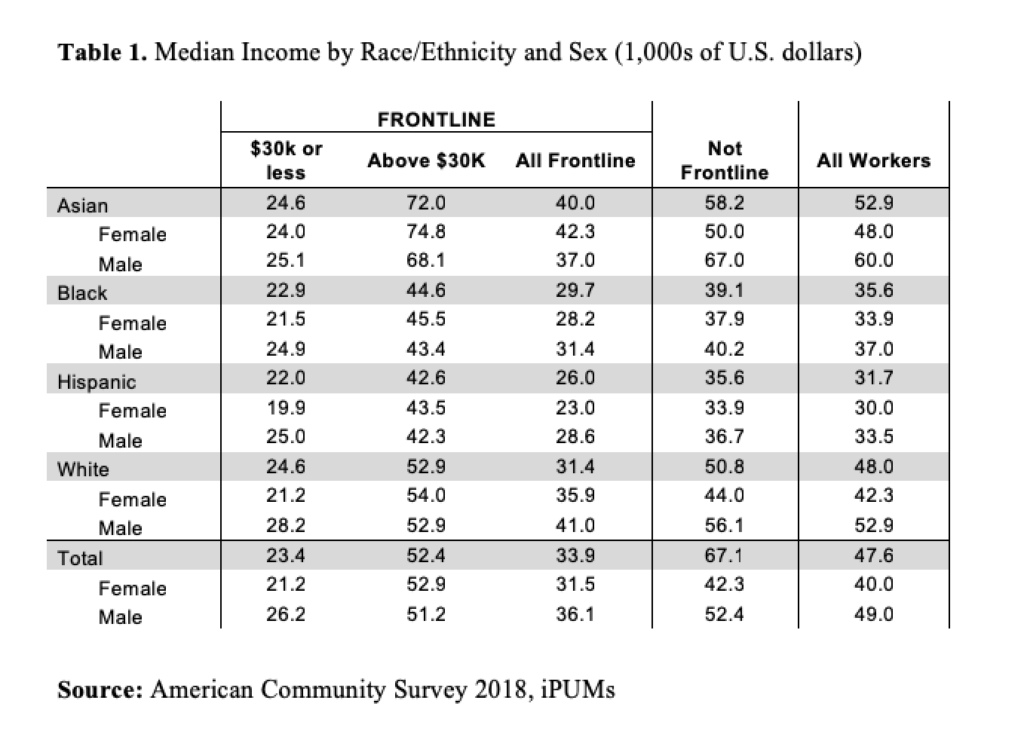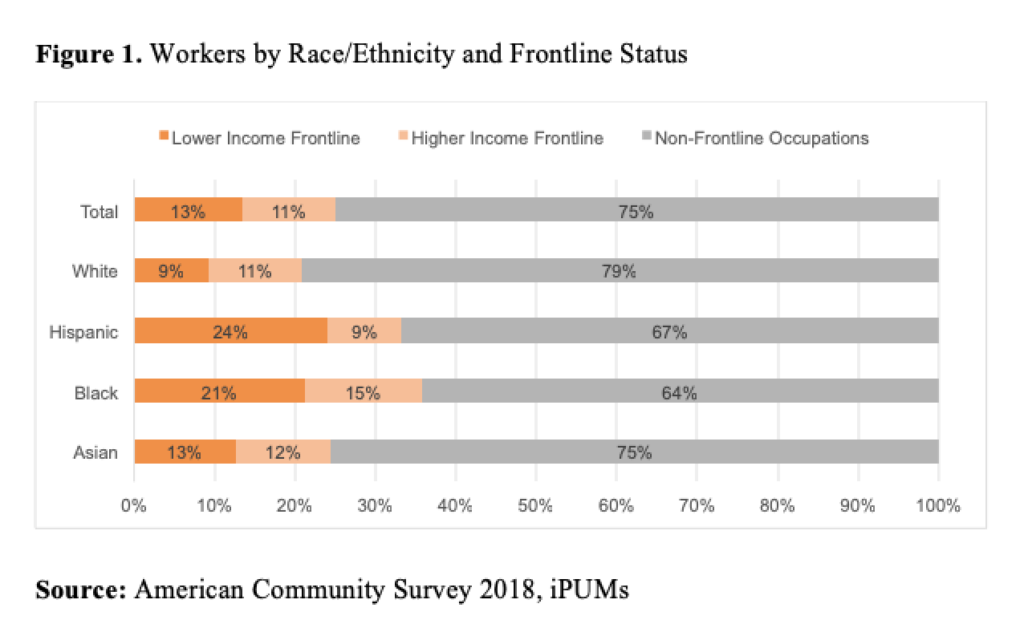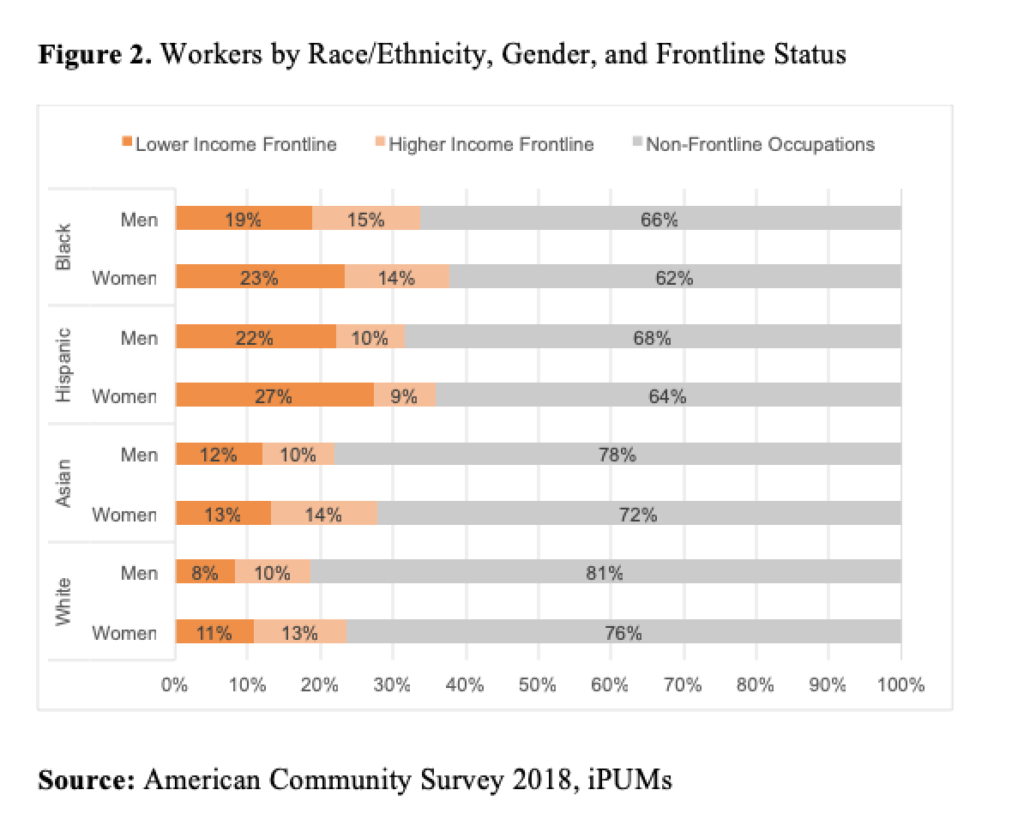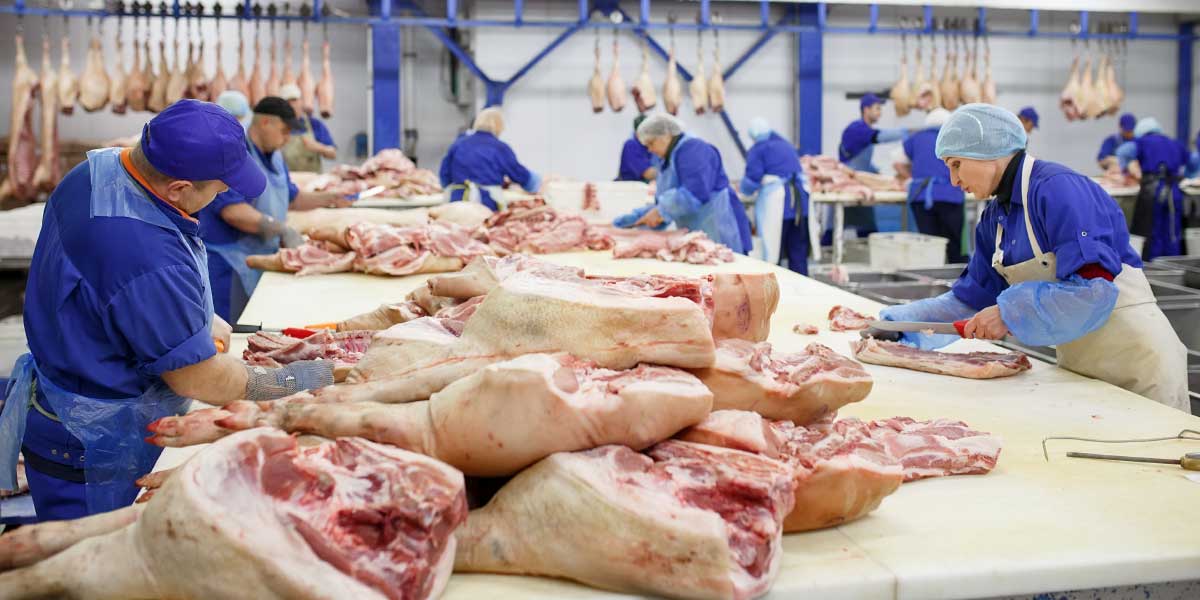Lily Casura, Ricardo Lowe, Jr., Cristina Martinez, Sarah Serpas, Victoria Castellanos, and Joachim Singelmann examine the sociodemographic characteristics of frontline workers in the United States in terms of race/ethnicity, sex, and income.
Frontline occupations are defined as those involving close face-to-face contacts with consumers, clients, and patients, or where social distancing is impossible (e.g., meat-processing plants). Frontline workers are poorly paid, are disproportionately African American, Hispanic, and female, and are also less likely to have health insurance than workers in other occupations.
Frontline workers in the US
The coronavirus pandemic has shone a bright light on many inequities in U.S. society. These issues include income inequality as well as sex and racial/ethnic differentials in how the virus affects individuals and populations. While everyone is at risk for contracting the virus, and everyone can take some mitigation steps to reduce that risk, frontline workers, in contrast to those being able to work remotely from home, absorb additional risks when, for example, they take public transportation to/from their jobs, in addition to working directly with patients, customers, co-workers, and clients. Frontline workers are employed in a variety of industries, but especially in medical and health services, law enforcement, retailing, and meat processing.
We used data from the 2018 American Community Survey (ACS) for the entire U.S. (sample size=7.7 million) to identify a group of 71 frontline occupations. We divided them into higher- and lower-income frontline occupations using the benchmark of $30,000 income (roughly 120% of the poverty threshold for a family of four in the U.S.). Under this definition, frontline occupations account for about one in every four workers. Slightly over one-half (54%) of frontline workers earn $30,000 or less.
Median income of frontline workers by race/ethnicity and sex
The median income for lower-paid frontline work across race and ethnicity ranges from $22,000 to about $24,600. For higher-paid frontline work, that range is about $42,600 to $72,000. Women in lower-paid frontline occupations are more likely to have lower median incomes than their male counterparts. Across all race/ethnicity groups in lower-paid frontline work, women make between $1,000 and $7,000 less than men do. White workers have the largest median income disparity by sex.
Overall, frontline workers make substantially less than non-frontline workers. This is the case for all race and ethnic groups and, within those, across genders. (Tab.1)

Race/ethnic differentials of frontline workers
Black (36%) and Hispanic (33%) workers are much more likely to be employed in frontline occupations than Asians (25%) and non-Hispanic Whites (21%), and are more concentrated in low-paid occupations. Nearly three fourths of all Hispanic frontline workers are in low-paid frontline occupations, and almost three out of five Black frontline workers earn $30,000 or less (Figure 1).

Sex disparities in frontline work
Women are more likely to be frontline workers than are men (28% vs. 23%), and this greater concentration is found for every racial and ethnic group, although the sex differential is negligible for Whites and Asians. Women are also more concentrated in the lower-income frontline occupations than are men, Hispanic (27%) and Black (23%) female workers especially (Figure 2).

Insurance status of total employment and frontline workers
There is no universal health insurance in the U.S. Most people are covered through their jobs. However, many lower-paid jobs do not come with health insurance benefits. Given the additional risk of coronavirus infection to which frontline workers are exposed, we examined their insurance status. As expected, lower-income frontline workers are more likely to be uninsured than higher-income frontline workers (23% vs. 7%). This suggests a total of almost 3.8 million lower-income frontline workers without health insurance. Further disparities are evident when broken down by race and ethnicity. Hispanics have the highest percentage of uninsured lower-income frontline workers, at 37%, compared with 19% for Black workers and 16% for both Asian and White workers. Insurance coverage disparity is still present in higher-income frontline workers; 15% of Hispanic higher-income frontline workers are uninsured, versus less than 8% of White, Black, and Asian higher-income frontline workers.
Discussion of findings
The over-representation of Black and Hispanic workers in frontline occupations is another example of long-standing inequities in the U.S. labor market. These groups not only represent a majority of frontline workers, but they are also heavily clustered in low-wage occupations. This disparity is further amplified when examining these occupations by sex. For instance, Black and Hispanic women are even more likely to work in frontline occupations than their male counterparts.
Our findings provide empirical support for sociologist Whitney Pirtle’s (2020) framework of racial capitalism, whereby the Black and Hispanic populations are allocated to occupations that, although important to the functioning of society — as shown by the current pandemic — nonetheless have poverty-level remuneration and low status. This disconnect between essential work and its pay is strongly associated with the race and ethnicity of persons carrying out that work. And as Pirtle notes, this kind of work is being accomplished by people of color, who are more likely than their white counterparts to have underlying health conditions, which in turn makes them even more susceptible to contracting the coronavirus through close contact with patients, customers, co-workers, and clients (Centers for Disease Control and Prevention 2020; The New York Times 2020).
References
Centers for Disease Control and Prevention. 2020. “COVID-19 in Racial and Ethnic Minority Groups”. Retrieved 5 July 2020.
Pirtle, Whitney N. Laster. 2020. “Racial Capitalism: A Fundamental Cause of Novel Coronavirus (COVID-19) Pandemic Inequities in the United States.” Health Education and Behavior.
The New York Times. 5 July 2020. “The Fullest Look Yet at the Racial Inequity of Coronavirus.” By Richard A. Oppel Jr., Robert Gebeloff, K.K. Rebecca Lai, Will Wright and Mitch Smith.


